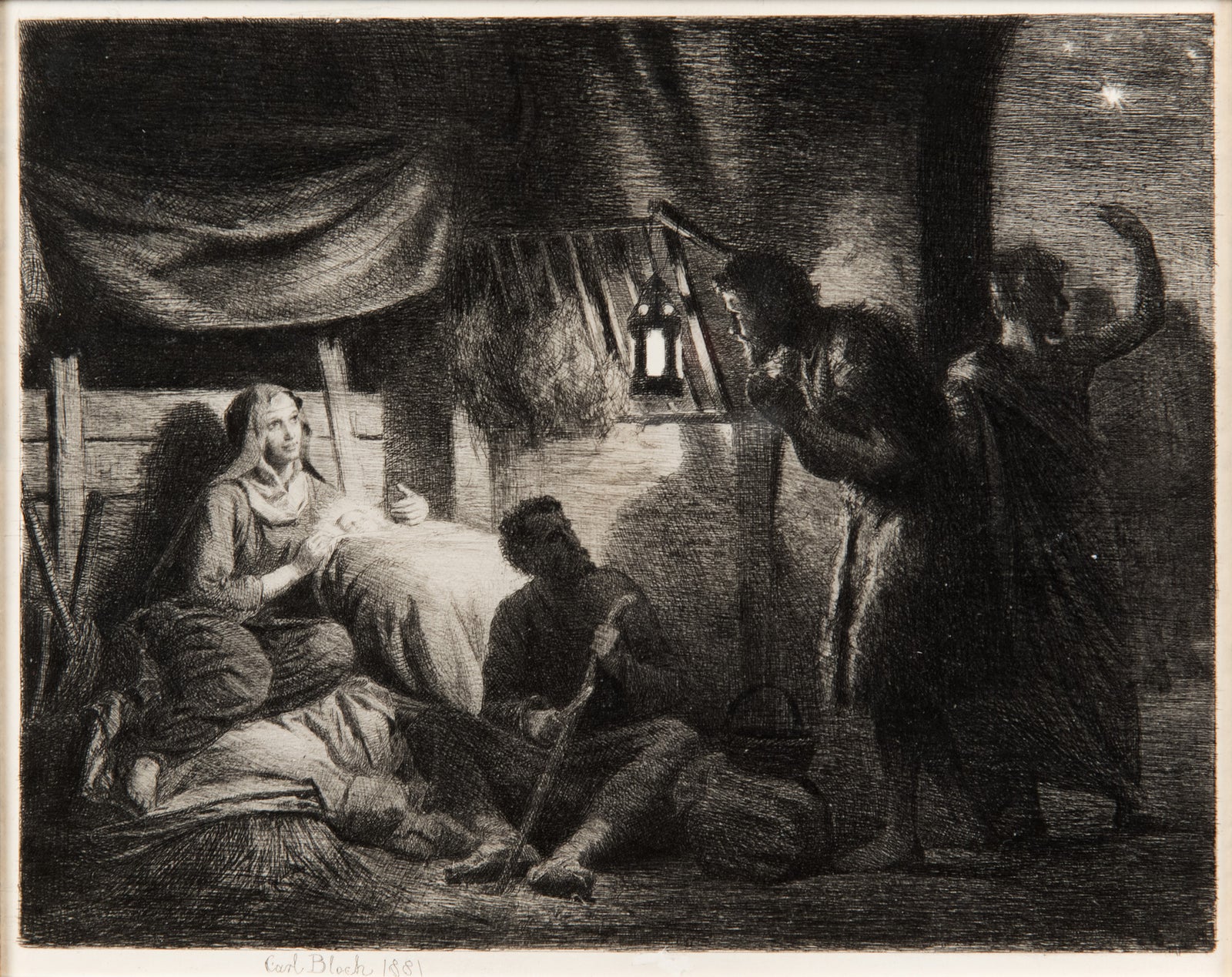The Nativity by Carl Bloch

Carl Bloch is regarded in many circles as one of the great depicters of religious art of the 19th Century. His work has seen a resurgence of popularity, in Utah in particular thanks to exhibitions at the BYU Museum of Art and works borrowed from collections in New York and Bloch's native Denmark. But not all of his works are so grandiose. Bloch was a respected engraver and illustrator and did dozens of humble scenes depicting stories from the Bible.
This piece is particularly appropriate as we approach the Christmas season. Bloch's depiction of The Nativity is both humble and luminary. This version is an etching which allows Bloch's use of light to stand front and center as the focal point, centering on the Christ-child and his motherTechnically speaking, etchings are both difficult to produce and rare.
In traditional pure etching, a metal (usually copper, zinc or steel) plate is covered with a waxy ground which is resistant to acid. The artist then scratches off the ground with a pointed etching needle where he or she wants a line to appear in the finished piece, so exposing the bare metal. The plate is then dipped in a bath of acid, technically called the mordant or etchant, or has acid washed over it. The acid "bites" into the metal (it dissolves part of the metal) where it is exposed, leaving behind lines sunk into the plate. The remaining ground is then cleaned off the plate. The plate is inked all over, and then the ink wiped off the surface, leaving only the ink in the etched lines. The plate is then put through a high-pressure printing press together with a sheet of paper (often moistened to soften it). The paper picks up the ink from the etched lines, making a print.
This etching is of exceptional quality and is beautifully framed, a perfect Christmas gift or a way to celebrate the season in your home.






